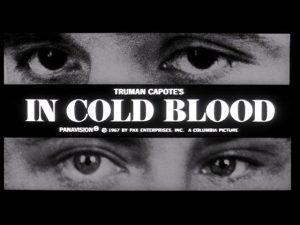Introduction
True crime content has experienced a meteoric rise in popularity over the past decade. From podcasts and documentaries to books and television series, the genre has captivated audiences worldwide. This article delves into the growth of true crime content, examining audience trends and preferences that have contributed to its enduring appeal.
The Evolution of True Crime Content

-
Historical Context
True crime as a genre is not a recent phenomenon. Its roots can be traced back to the 16th century with pamphlets detailing criminal cases and public executions. In the 19th century, the genre gained traction through sensationalist newspapers and serialized accounts of notorious crimes. However, it was Truman Capote’s “In Cold Blood” in 1966 that is often credited with legitimizing true crime as a literary genre.
-
Modern Revival
The advent of the internet and digital media has revolutionized true crime content. The genre’s modern revival can be attributed to several key developments:
- Podcasts: The launch of “Serial” in 2014 marked a turning point for true crime content. The podcast’s investigative approach and storytelling prowess captivated millions, setting the stage for a proliferation of true crime podcasts.
- Streaming Services: Platforms like Netflix, Hulu, and HBO have invested heavily in true crime documentaries and series. Productions such as “Making a Murderer,” “The Jinx,” and “Tiger King” have garnered massive viewership and critical acclaim.
- Social Media: Social media platforms have facilitated discussions, theories, and community engagement around true crime content. Reddit threads, Facebook groups, and Twitter hashtags have become hotspots for true crime enthusiasts.
Audience Demographics and Psychographics

Who is Consuming True Crime Content?
Understanding the audience for true crime content requires an examination of both demographic and psychographic factors.
-
Demographics:
- Gender: Studies indicate that women are more likely to consume true crime content than men. This trend is particularly pronounced in podcast and book audiences.
- Age: True crime content appeals to a wide age range, but it is especially popular among Millennials and Gen Z.
- Geography: While true crime content has a global audience, it is particularly popular in North America and Europe.
-
Psychographics:
- Curiosity: Many true crime enthusiasts are driven by a deep curiosity about human behavior, criminal psychology, and the justice system.
- Empathy: True crime content often highlights the victims’ stories, resonating with audiences who empathize with their plight.
- Thrill Seeking: The suspense and intrigue of true crime narratives appeal to those who enjoy thrillers and mysteries.
Trends in True Crime Content

-
Narrative Techniques
True crime content creators employ various narrative techniques to engage their audience:
- Investigative Journalism: In depth investigations and meticulous research are hallmarks of high quality true crime content. Podcasts like “Serial” and documentaries like “The Keepers” exemplify this approach.
- Storytelling: Effective storytelling, with a focus on character development and narrative arcs, enhances the emotional impact of true crime content. “Mindhunter” and “The Staircase” are notable examples.
- Multimedia Integration: Combining different media formats such as audio, video, and text provides a richer and more immersive experience. Interactive documentaries and augmented reality (AR) experiences are emerging trends in this space.
-
Ethical Considerations
The popularity of true crime content raises important ethical questions:
- Victim Sensitivity: Content creators must balance storytelling with respect for victims and their families. Sensationalism and exploitation can cause additional harm.
- Accuracy and Accountability: Ensuring factual accuracy and accountability in reporting is crucial. Misinformation and biased narratives can perpetuate injustice.
- Impact on Legal Proceedings: True crime content can influence public opinion and, in some cases, ongoing legal proceedings. Ethical creators must navigate this complex landscape responsibly.
Audience Preferences

-
Content Formats
Audience preferences for true crime content vary across different formats:
- Podcasts: The onthego nature of podcasts makes them a convenient choice for many true crime enthusiasts. Popular podcasts like “My Favorite Murder” and “Crime Junkie” have built dedicated followings.
- Documentaries and Series: Visual storytelling in documentaries and series offers a compelling way to present true crime narratives. Productions like “Wild Wild Country” and “The Confession Tapes” have captivated viewers.
- Books: True crime books provide a deep dive into cases, offering detailed analyses and personal insights. Authors like Ann Rule and Michelle McNamara have made significant contributions to the genre.
-
Thematic Preferences
Certain themes and topics resonate more with true crime audiences:
- Unsolved Mysteries: Cases that remain unsolved or have ambiguous outcomes intrigue audiences. The mystery element keeps them engaged and invested in the story.
- Psychological Profiles: Exploring the psychology of criminals and understanding their motivations adds a layer of depth to true crime content. Profiles of serial killers and infamous criminals are particularly popular.
- Wrongful Convictions: Stories of wrongful convictions and miscarriages of justice highlight systemic issues within the legal system. These narratives often inspire advocacy and reform efforts.
The Future of True Crime Content

-
Technological Innovations
Advancements in technology are shaping the future of true crime content:
- Virtual Reality (VR): VR can provide immersive experiences, allowing audiences to explore crime scenes and witness events from different perspectives.
- Artificial Intelligence (AI): AI can assist in analyzing vast amounts of data, uncovering new insights, and even generating content. AI driven storytelling tools are on the horizon.
- Blockchain: Blockchain technology can enhance transparency and accountability in true crime content creation and distribution.
-
Societal Impact
The societal impact of true crime content is multifaceted:
- Awareness and Advocacy: True crime content has the power to raise awareness about important social issues, such as domestic violence, human trafficking, and systemic injustice.
- Community Building: Online communities and forums provide spaces for true crime enthusiasts to connect, share information, and support each other.
- Legal Reforms: High profile true crime cases have spurred legal reforms and policy changes. Public interest and pressure can drive accountability and justice.
Conclusion
The growth of true crime content is a testament to its enduring appeal and cultural significance. By understanding audience trends and preferences, content creators can continue to produce engaging, ethical, and impactful true crime narratives. As technology advances and societal awareness evolves, the genre is poised for even greater innovation and influence in the years to come.











